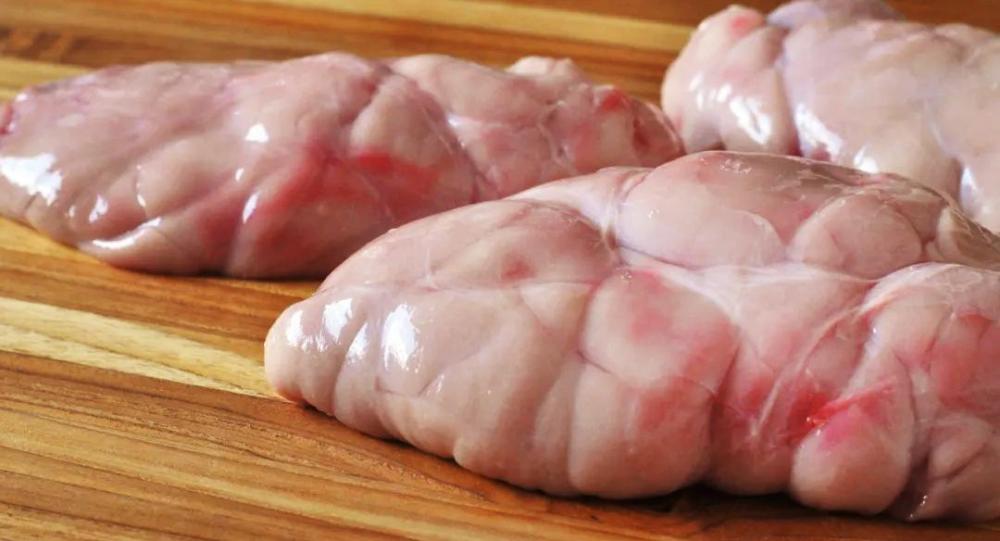Etymologically uncertain, other than ‘sweetbread’ being a compound of 'sweet' and 'bread', the term has been in use in English since the 16th century. There is a suggestion that it may be that ’sweet’ is referring to a taste less robust than muscle meat and that ‘bread’ is a figurative use, meaning ‘food’. I don’t entirely buy that theory. On French menus, they are ris de veau (veal) or ris d’agneau and are highly valued.
Image: https://zhuanlan.zhihu.com/p/424407822
To add to the confusion, the name refers to two distinct parts of the animal: the thymus gland and the pancreas. Then just as you are beginning to accept that, the thymus is further subdivided into throat and heart thymus, two parts of the same gland. The heart thymus is the most sought after.
Soft, rich and creamy, the sweet breads are less offal-y than other parts. Usually fried, they are usually sourced from calves or lambs, but beef and pig sweetbreads are also sold, but less desirable.
Like other offal, they should be well cleaned and soaked for several hours to remove any blood, They are then simmered until tender then sliced and trimmed of any connective tissues etc. They are often sold pre-soaked. Ask your friendly butcher. Here is a recipe from Michelin starred Sean Hill.
Surprisingly, China doesn’t eat these. My English - Chinese food dictionary dismisses 胸腺 (xiōng xiàn), thymus as being ‘regarded as a delicacy in the West’ and ignores pancreas entirely. Their loss.




